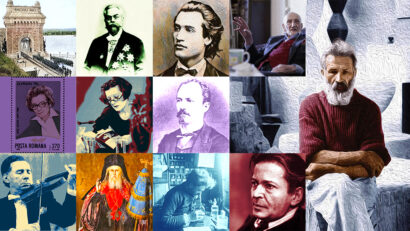Rearranging the Danube Delta
Romania's fascinating Danube Delta

Christine Leșcu, 22.08.2020, 13:00
The Danube Delta as it is today is one of natures magical creations. It is also an epitome of mans capacity to transform the environment according to his thirst for knowledge and his needs. To a significant extent, the Danube Delta of today is a perfect example of mans ability to rearrange it, with such an endeavor being documented as early as the mid-19th century, so much so that the most important works carried by man, using its intelligence, were aimed at rearranging River Danube in order to facilitate navigation for commercial vessels, thus encouraging economic progress and human mobility.
The rearrangement of the Danube Delta was a grandiose project. It targeted the transformation of the river in its entirety into a pan-European navigable waterway. A quick look at a map of the Danube Delta dated 1856, but also a look at one of the Deltas present-day maps reveals the numerous watercourse rearrangement works for the Danubes Sulina Arm, which was eventually turned into a navigable waterway. The historian Constantin Ardeleanu with the “Lower Danube” University in Galati is a specialist in the history of the rearrangement works for the Delta.
Constantin Ardeleanu:
“It was an extremely interesting technical work, initiated in 1856 and completed all throughout the following timeframe. It has continued to this day, yet there are technical operations that need to be carried in Sulina, to maintain the navigability of the river. What has been most important and literally groundbreaking all along was the manner in which the works were conducted. A personality of world engineering coordinated the works, his name was Charles Hartley, he also scooped a great number of prestigious awards for everything he did at the Danube. Later on, he was appointed a technical consultant for the Suez Commission and contributed to the navigabilization of one of the waterways that was most vital for world trade.”
West of Tulcea, to the north, the Chilia arm branches off from the Danube, while east of the city, the Sfantu Gheorghe arm branches off from the Sulina Arm, to the south. Of the three arms, the one in the middle would be chosen as the main waterway. The 71-kilometre long Sulina Canal flew into the Black Sea next to the harbor of Sulina, a fishermens village that later grew into one of Romanias most cosmopolitan cities. By and large, rearrangement works consisted in the cutting of the bends and meanders made by the water course, in the consolidation of the banks and the dredging of the bottom so that the river may be deeper.
Historian Constantin Ardeleanu:
“Works began in 1857, when one of the arms was supposed to be picked for rearrangement works. There were several options, Hartley shared the opinion that the Sfantu Gheorghe arm was more favorable for such works than Sulina. Other engineers thought that financially, the Sulina arm was more prone to being rendered navigable. Works proper began in 1858 and the Sulina dams, which can still be seen today, were inaugurated in 1861. As a direct outcome of the works, the depth of the Danube over the Sulina sandbar, the bank of sand that was created there, increased from around 2.5 meters in 1856 to 4 or 5 meters five years later, and never ceased to increase until it reached the navigable level of 8 meters, roughly maintaining the same level to this day.”
Why was such a grandiose work needed? Explanations have to do with geopolitics and economy. For many centuries, the Danube rivermouths had been under the control of the Ottoman Empire, which was not so keen on conducting large-scale construction works.
Russias unabated offensive towards the south that began in the first half of the 18th century proved effective, pushing the Ottoman influence further south. However, Russia, which became the guaranteeing power for the Romanian Principalities after the Adrianopol Peace Treay in 1829, did not deem Danube as being important for its economy. Navigation in the area where River Danube flowed into the Black Sea was a difficult one, while the trade flow was scarce, if not chaotic. Alluvial sediments at the Danube rivermouths were a hindrance to a systematic, safe and controlled navigation process. So complex and multidisciplinary was the work of the European Danube Commissions chief engineer, Charles Hartley, that the supervisor of the grandiose project for the rearrangement of the Danube was dubbed ” the father of the Danube”.
Constantin Ardeleanu:
“For River Danube, what the engineers did, under the supervision of Hartley, was not only a work of utmost importance, it was also a scientific one. The Danube Delta is one of the worlds best-known sites having the form of a delta proper, if we try to understand how nature works. Those people were not just engineers who built several dams in Sulina, they were also prominent scientists who first understood how a delta worked: what the amount was, of the alluvial sediments it carried, how that amount was distributed among the three main arms of the Danube, what had to be done so that the Danube could become a navigable waterway for big tonnage vessels. It was a work of understanding a river, prior to becoming, in Hartleys own words, a work of taming and transforming it for the benefit of human communities.
Rearranging the Danube Delta and the emergence of the Sulina Canal meant the opening up to the sea of Romanian territories. From an economic point of view, it was the “breath of fresh air” the Romanian state was granted, for its own projects.
(Translation by Eugen Nasta)






























